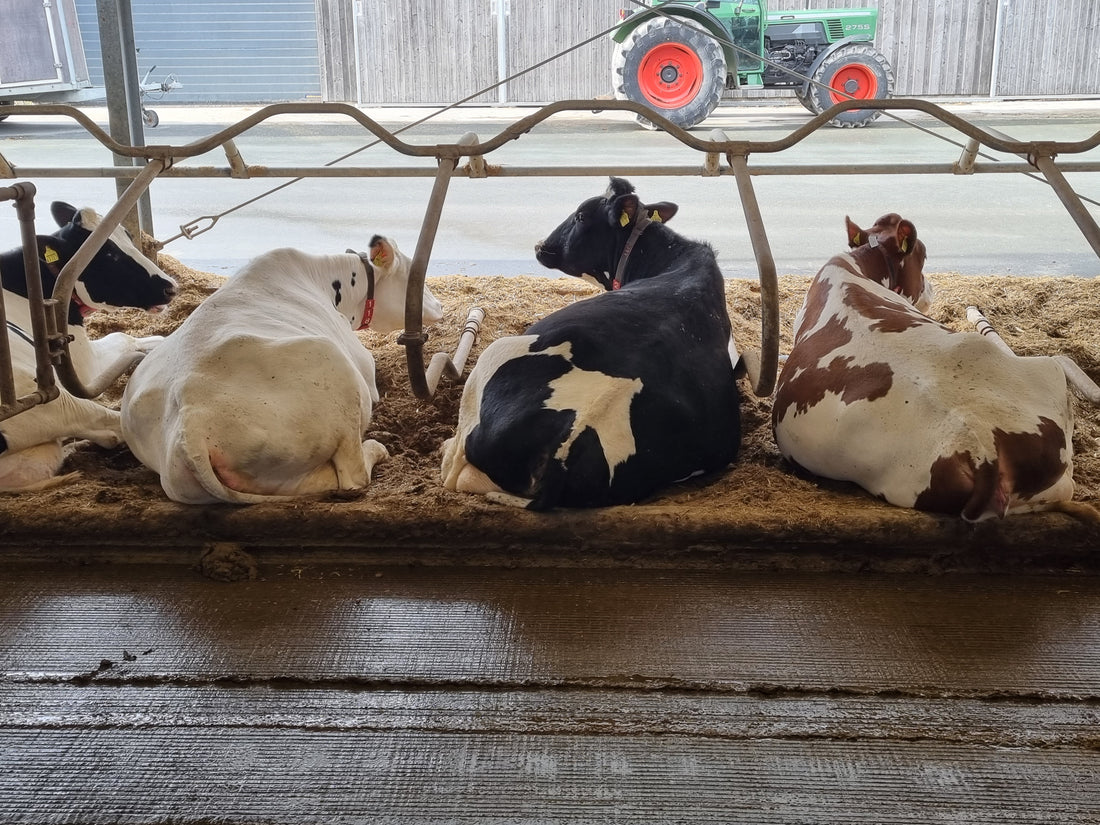It all starts from VIC – 4dBarn's blog series on one of the most important areas of barn design
Our first blog post introduced the background and results of the 2024 VIC study. In this part, we will take a closer look at the practical challenges and the solutions that were implemented on the research farms, i.e. the best VIC practices.
VIC does not like overcrowding or dirt
Sufficient space and regular bedding are the cornerstones of a functional VIC area. Overcrowding causes social stress and leads to dirt accumulation. Dirt, in turn, increases the risk of mastitis. Every VIC cow should be able to lie down whenever she wants, so there must be enough space in the deep bedded pack area to allow her to lie down and get up easily. Each cow must have a place to lie down in the VIC with stalls, and the stalls must be correctly sized.

Bedding is not a detail, but an essential part of animal welfare. The lying area must be kept clean and dry, and there must be sufficient bedding of good quality. Good practices observed on the farms participating in the study included daily or at least several times a week bedding in deep bedded pack areas. For VIC cows in stalls, bedding and sand smoothing were also carried out regularly several times a week.
The right VIC does not show in workload – but in efficiency
At the study farms, the functionality of the VIC was not determined by its structure alone, but by how the area was integrated into the daily activities of the barn. The VIC is located along the passageways of the barn, allowing the cows to be observed almost unnoticed when passing by. All farms had headlocks in VIC enabling quick and safe handling of the cows.
Farmers reported that cows recovered from calving faster and more reliably in the VIC. This was not just a feeling, as some farms monitored calved cows closely for 3–5 days, checking body temperature, feed intake, and general condition, among other things. Several producers reported noticing clear differences compared to their old calving routines. In addition, VIC was seen to offer a clear advantage in training heifers. When heifers were able to observe more experienced cows in a calm environment, they learned to use the milking robot more quickly and with less stress. Individual monitoring was also possible without increasing the workload too much.
Comments from farms participating in the study:
“I think the VIC area has had a positive impact to the cows.”
“Yes, we are satisfied with VIC. I estimate that VIC has increased milk production by up to 10%, and the animals are healthier.”
“A good place for training, especially for first-calf heifers. They learn how to use the milking robots.”

Systematic monitoring brings stability to everyday life
On the farms participating in the study, monitoring of VIC cows was organized in a wise and practical manner. Most farms had defined separate groups for VIC cows in their production management systems, which enabled easy monitoring from a computer. In addition, a whiteboard was used in the vicinity of the VIC area to record, for example, fever observations, calving dates, and treatment measures taken. On several farms, the body temperature of VIC cows was systematically measured for 3–5 days after calving. All farms had a clear operating procedure: information was visible and easily accessible to all employees, which made monitoring the cows smooth without increasing the workload.

Watch the recording of the Dairy Welfare seminar
👉 4dBarn Dairy Welfare seminar recording offers current perspectives on barn design, welfare, and work efficiency from an international perspective.
It also includes a summary of the results of the summer 2024 VIC survey.
🎬 The recording is in English and can be viewed immediately after purchase for 60 days.
Need help designing a functional VIC?
📞 Check out the 4dBarn Designed service and let's design a VIC solution for your barn that works for you – not just a calving pen, but a complete system that supports well-being and smooth production.


